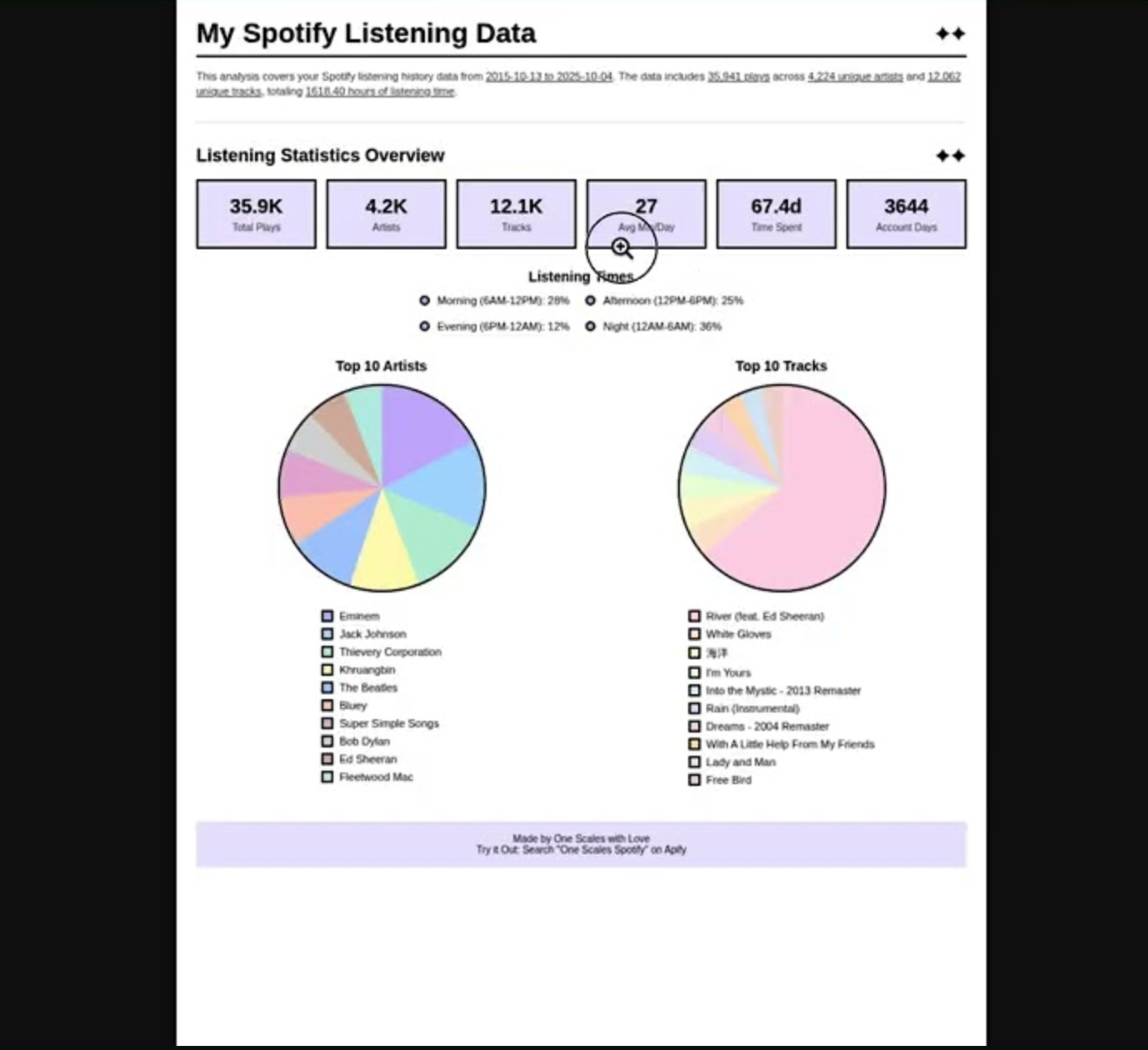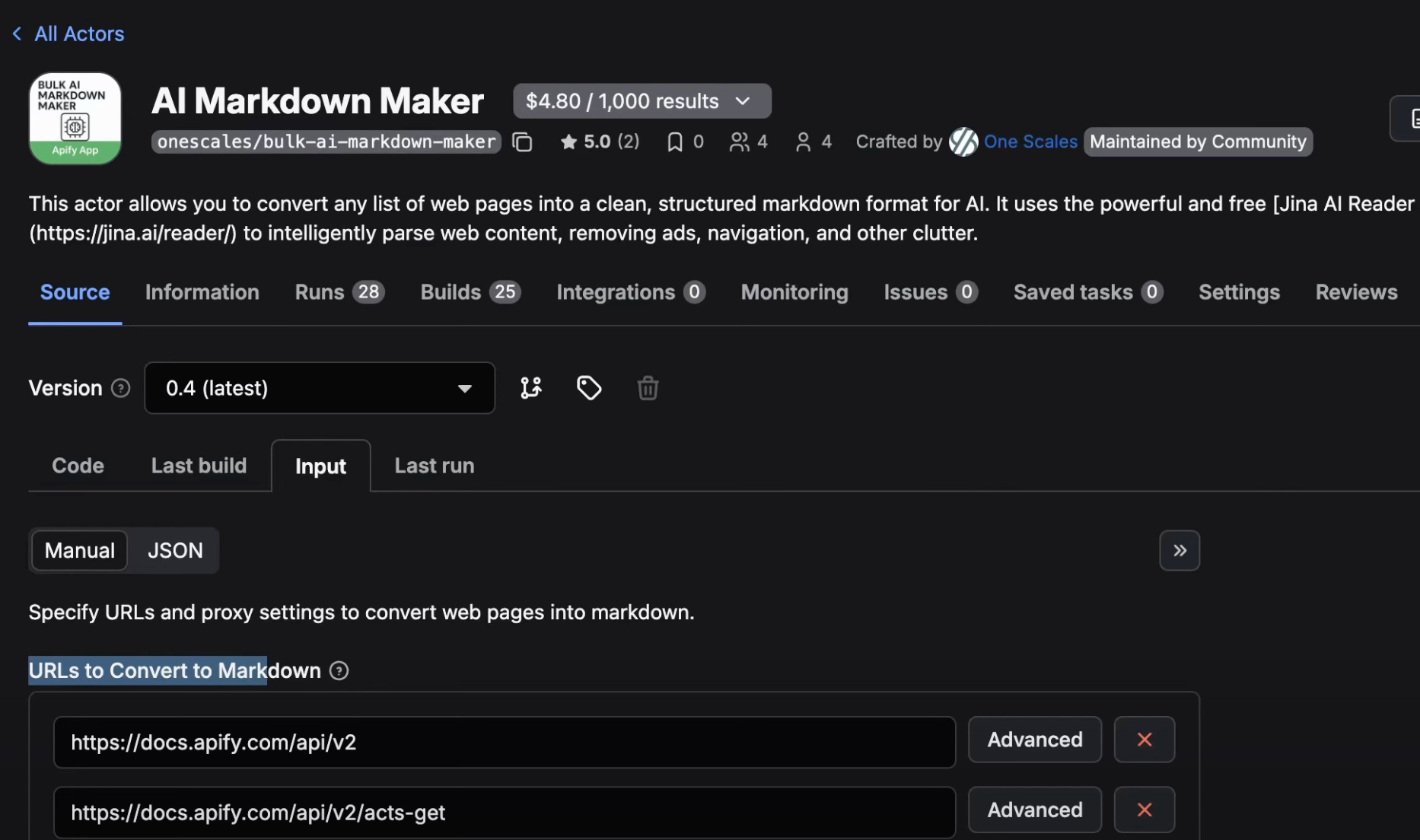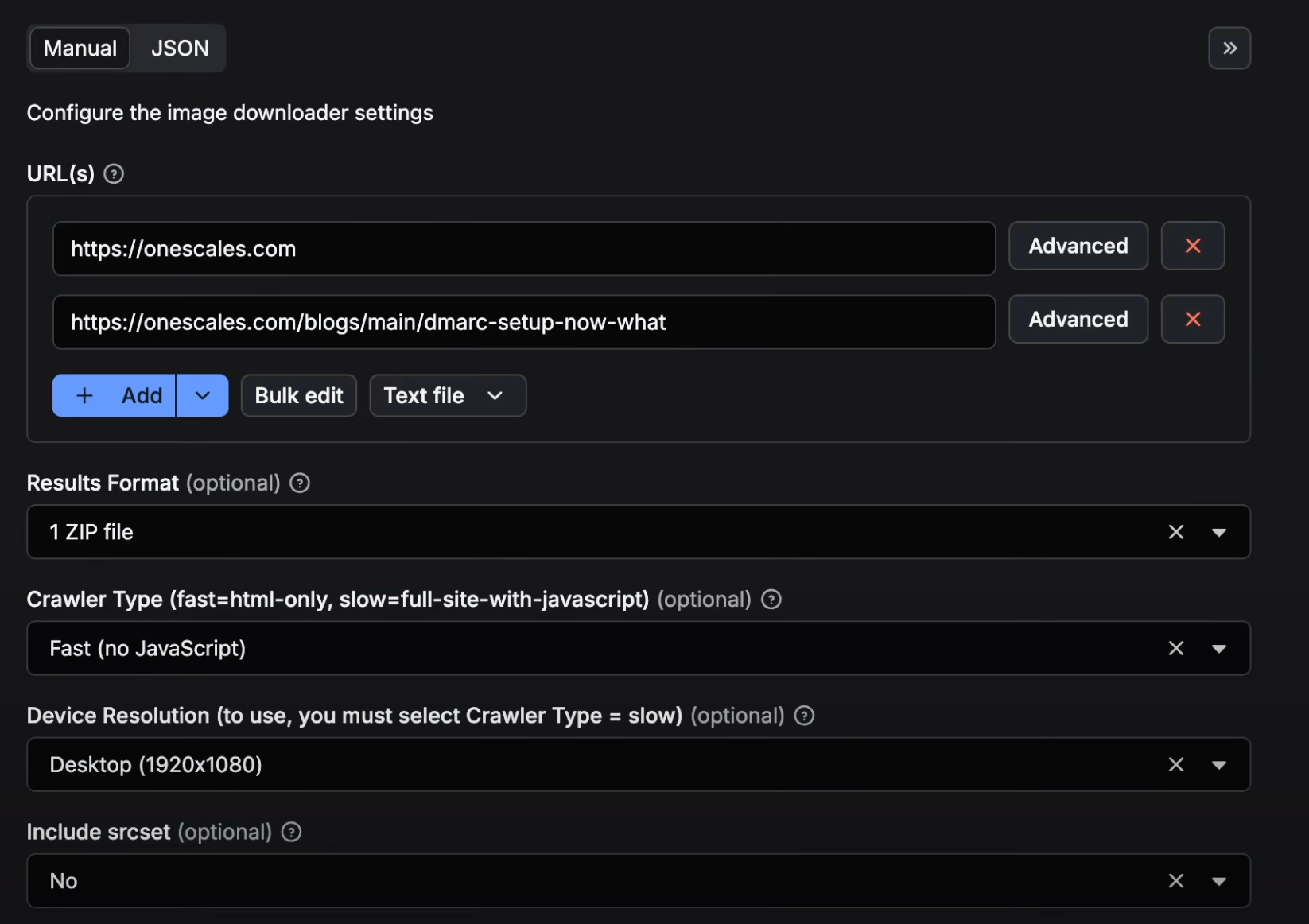Working with AI tools like ChatGPT, Claude, or other LLMs often requires feeding them web content. But raw web pages come loaded with ads, navigation menus, footers, and other clutter that dilutes your prompts and wastes tokens. What if you could automatically convert any web page into clean, structured markdown that's perfectly formatted for AI consumption?
That's exactly what we'll accomplish in this tutorial using our AI Markdown Maker tool.
What You'll Accomplish
By following this guide, you'll learn to:
- Transform messy web pages into clean markdown automatically
- Process multiple URLs simultaneously for bulk conversion
- Remove ads, navigation, and web clutter intelligently
- Export results in formats optimized for AI workflows
- Set up efficient content processing pipelines
The Challenge with Web Content
Anyone who's worked extensively with AI tools knows the pain points:
- HTML Noise: Raw web scraping pulls in menus, ads, and irrelevant content
- Inconsistent Formatting: Different sites structure content differently
- Token Waste: Feeding cluttered content into AI models wastes expensive API calls
- Manual Cleanup: Cleaning content by hand is time-intensive and doesn't scale
Our Solution: Intelligent Web-to-Markdown Conversion
The AI Markdown Maker leverages the powerful Jina AI Reader API to solve these problems. Instead of simple scraping, it intelligently parses web content, identifying the main content and discarding the noise.
Getting Started: Your First Conversion
Step 1: Access the Tool
Navigate to the AI Markdown Maker on Apify. You'll find a straightforward interface designed for both single pages and bulk processing.
Step 2: Prepare Your URLs
You have multiple input options depending on your workflow:
Single URL Testing Start by testing with one URL to see the output quality:
https://example.com/blog/interesting-articleMultiple URLs (Manual) Add URLs one at a time, pressing enter after each:
https://site1.com/page1
https://site2.com/page2
https://site3.com/page3Bulk Import Use the "Bulk edit" feature to paste entire lists:
https://competitor.com/feature-comparison
https://docs.example.com/api-guide
https://blog.industry.com/trends-2024
https://research.university.edu/paperFile Upload For large batches, upload a .txt file with one URL per line. This is perfect when you're working with:
- Research citation lists
- Competitor analysis batches
- Documentation sets
- Content audit results
Step 3: Configure Processing Options
Set Maximum Items The "Maximum Number of Pages to Process" field lets you:
- Test subsets before full processing
- Manage processing time for large batches
- Stay within rate limits
Important: Free plan users can process up to 100 URLs per run.
Proxy Configuration Always enable proxy settings (default Apify Proxy works perfectly):
- Prevents IP blocking
- Ensures reliable processing
- Handles rate limiting automatically
Step 4: Execute the Conversion
Click "Start" and monitor the process. The tool will:
- Process URLs sequentially with intelligent delays
- Apply Jina AI Reader to each page
- Extract clean content while discarding clutter
- Structure output in markdown format
- Handle various website architectures automatically
Processing Time: Expect about 3-4 seconds per URL due to respectful rate limiting.
Step 5: Review and Export Results
Once processing completes, you have multiple access options:
Online Preview Use the "Output" or "Dataset" tabs to:
- Review conversion quality
- Spot-check random samples
- Identify any problematic URLs
Export Formats Download in your preferred format:
- JSON: Best for programmatic use and API integration
- CSV: Perfect for spreadsheet analysis and filtering
- Excel: Ideal for team sharing and reporting
Advanced Usage Patterns
Content Research Workflow
1. Collect competitor URLs
2. Bulk convert to markdown
3. Feed cleaned content to AI for analysis
4. Generate insights and summariesDocumentation Processing
1. Gather scattered documentation pages
2. Convert to consistent markdown format
3. Combine into comprehensive knowledge base
4. Use for AI-powered Q&A systemsArchive Creation
1. Identify important web content
2. Convert to future-proof markdown
3. Store in version control
4. Maintain searchable content libraryQuality Optimization Tips
URL Preparation
- Remove tracking parameters (
?utm_source=...) - Ensure URLs are publicly accessible
- Test problematic URLs individually first
- Use canonical URLs when available
Batch Management
- Start with 10-20 URLs for quality testing
- Process similar content types together
- Monitor results before scaling up
- Keep backup lists of original URLs
Content Validation
- Sample check 10% of results
- Look for missing sections or formatting issues
- Verify that main content was captured
- Check that navigation/ads were removed
Integration Possibilities
While this tutorial focuses on the UI, the tool offers extensive automation options:
API Access
# Example API call structure
curl -X POST "https://api.apify.com/v2/acts/~YOUR_ACTOR_ID/runs" \
-H "Content-Type: application/json" \
-d '{"startUrls": [{"url": "https://example.com"}]}'Automation Workflows
- Schedule regular content processing
- Integrate with content management systems
- Build AI content pipelines
- Create monitoring systems for competitor content
Common Use Cases
AI Training Data Preparation Convert web content into clean training material for custom models.
Content Analysis Projects Clean competitor content for strategic analysis and benchmarking.
Knowledge Management Transform scattered web resources into organized markdown documentation.
Research Compilation Convert academic papers, reports, and articles into consistent format.
Content Archiving Preserve important web content in a clean, searchable format.
Troubleshooting Common Issues
Rate Limiting
- The tool automatically handles this with delays
- For very large batches, consider breaking into smaller runs
- Monitor processing speed and adjust batch sizes accordingly
Quality Issues
- Some complex layouts may not convert perfectly
- Test problematic URLs individually
- Consider manual review for critical content
Access Problems
- Ensure URLs are publicly accessible
- Check for login requirements or paywalls
- Verify URLs are correctly formatted
Best Practices for Scale
Planning Large Batches
- Test First: Always run 5-10 URLs as a quality check
- Categorize Content: Group similar content types together
- Monitor Progress: Check intermediate results during long runs
- Backup Strategy: Keep original URL lists safe
Quality Assurance
- Sample Checking: Review 10% of results randomly
- Edge Case Testing: Try difficult layouts first
- Format Validation: Ensure markdown structure is correct
- Content Completeness: Verify no important sections are missing
Workflow Integration
- Standardize Naming: Use consistent file naming conventions
- Version Control: Track different batches and processing dates
- Documentation: Record processing settings and results
- Automation: Gradually move to API-based workflows for recurring tasks
Getting the Most Value
The AI Markdown Maker shines when you need to process web content at scale while maintaining quality. Whether you're building AI applications, conducting research, or managing content workflows, clean markdown output makes everything downstream more efficient.
The tool's intelligent parsing means you spend less time cleaning data and more time generating insights. Combined with the ability to process hundreds of URLs reliably, it transforms how you work with web content.
Next Steps
Ready to streamline your web-to-AI content workflow? Start with a small batch to see the quality difference, then scale up based on your needs. The combination of intelligent parsing, bulk processing, and multiple export formats makes this tool essential for anyone working at the intersection of web content and AI.
Whether you're a researcher, content strategist, developer, or AI practitioner, clean, structured markdown opens up possibilities that messy web content simply can't match.








